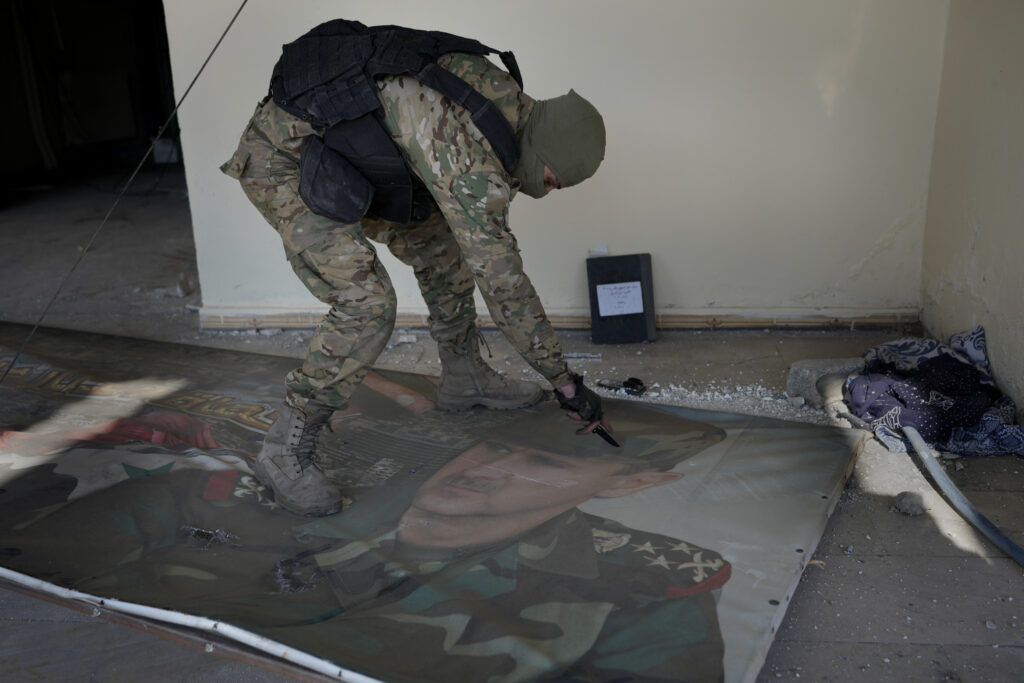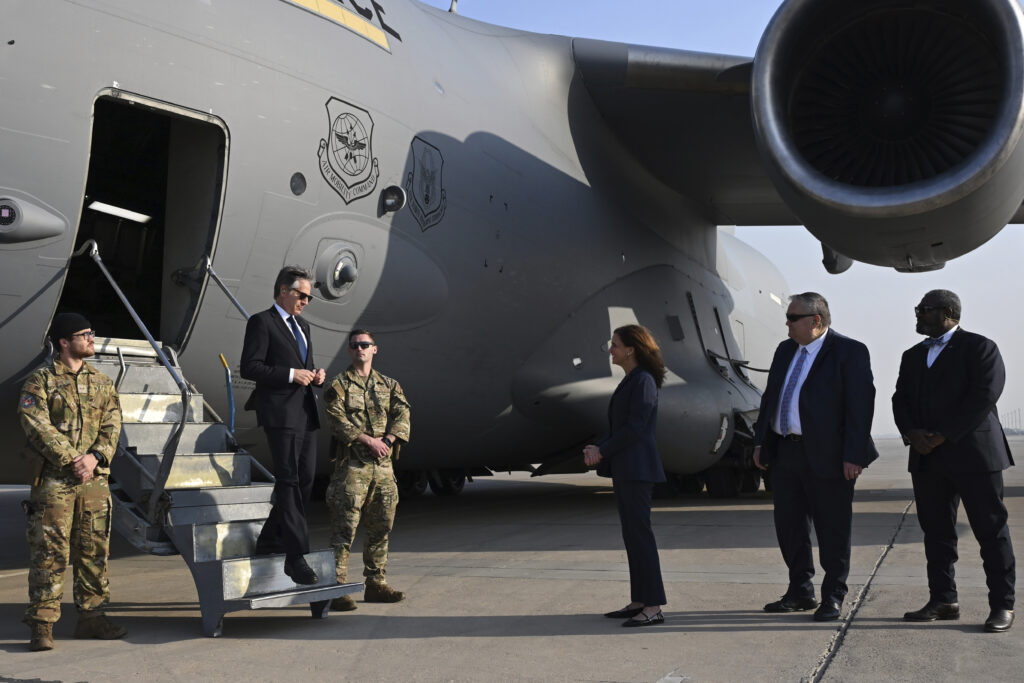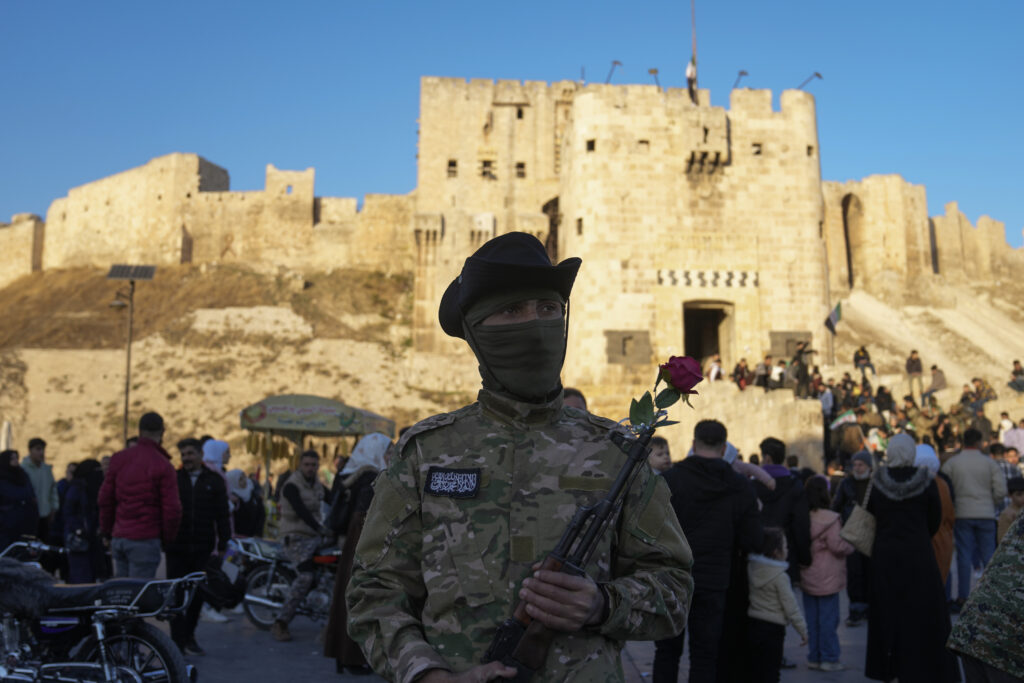Kurdish Question Moves to the Fore as Turkish-Backed Rebels Clash With Syrian Democratic Forces Bolstered by America
Will President Trump stick with his call for the complete withdrawal of American forces from Syria?

The fall of the Syrian tyrant Bashar Al-Assad is bringing a sense of hope to much of the country, but rising tensions in areas controlled by the America-supported Syrian Democratic Forces threaten stability.
Last week, Turkish-backed Syrian National Army rebels, who allied with Hayat Tahrir al-Sham to capture Damascus, clashed with Syrian Democratic Forces positions in the north. They are competing for control of key border areas long held by the United States-bolstered fighters. Turkey’s growing influence and continued opposition to the Syrian Democratic Forces risk a broader conflict.
“The fall of the Assad regime isn’t an end to the fighting; it is merely an end to the latest chapter of fighting,” a senior fellow at the Foundation for Defense of Democracies, Bill Roggio, tells The New York Sun. “HTS, the SNA, and the SDF will be vying for control of key regions to bolster their grip on Syria.”
According to Turkish press, Foreign Minister Hakan Fidan stated during a live broadcast on NTV that “eliminating the YPG is the strategic goal,” referring to the People’s Protection Group, which make up the backbone of the Syrian Democratic Forces but are considered by Turkey to be no different than the terrorist-designated Kurdistan Workers Party. While he also emphasized the importance of protecting the country’s Kurdish population, Kurds themselves are terrified.
“There has been no electricity in many areas, people are digging trenches, we hear they will attack Kobane,” one young father from a small village, Ibrahim, tells The New York Sun via encrypted message. “We are all so afraid. We don’t know what to believe.”

The Players on the Ground
The Syrian Democratic Forces, a coalition formed in 2015 to fight the Islamic State and currently guarding 45,000 Islamic State militants and their families in camps and prisons in Eastern Syria, came under attack this week by Syrian National Army rebels in northern Syria.
The Syrian National Army fighters targeted strategic areas with drone strikes, artillery, and ground operations. The attacks have led to significant casualties, damage to critical infrastructure like the Tishrin Dam, and raised severe humanitarian concerns due to power outages and civilian displacement.
The Syrian National Army, a group of Turkish-backed militias, seized the multiethnic Arab and Kurdish cities of Tal Rifaat and Manbij, previously held by the Syrian Democratic Forces, and solidified Turkey’s control over key regions west of the Euphrates, establishing a buffer zone along its southern border. The Syrian Democratic Forces withdrew to positions east of the Euphrates as the Syrian National Army rebels established control over key areas.
Following the capture of Manbij, the Syrian National Army crossed the Euphrates and seized the Tomb of Suleyman Shah, sparking outrage from the Syrian Democratic Forces and raising fears of further territorial loss, particularly near the city of Kobane.
“There are groups backed by Turkey in Manbij, stealing everything that belongs to Kurdish people,” another civilian, who did not want to be named, tells the Sun via encrypted message. “There are many Turkish drones and jets advancing to areas under the SDF control.”
Turkey views the Syrian Democratic Forces’ main factions, colloquially termed the YPG and YPJ, as affiliates of the Kurdistan Workers’ Party, a separatist group it considers a terrorist organization. While the United States also designates the Party as a terrorist group, it does not see the Syrian Democratic Forces in the same vein. Despite the rebranding effort and partnership with America, Turkey has consistently opposed its presence in Syria.
Amid recent clashes, a United States-backed MQ-9 Reaper drone was mistakenly shot down by the Syrian Democratic Forces, who misidentified it as a threat amid ongoing Turkish airstrikes. A United States-brokered ceasefire at Manbij on Wednesday has paused fighting temporarily, allowing Syrian Democratic Forces to withdraw east of the Euphrates. Still, attacks persist in other areas, continuing to fuel tensions in the region.
“Four million people living in Syria’s autonomous, Kurdish-led northern regions would love to join the celebrations over Mr. Al-Assad’s ouster. Turkey, though, is determined to prevent any such spirit of unity,” Syria researcher and co-founder of the Rojava Information Center, Matt Broomfield, tells the Sun. “Instead, the new Syria is already being bathed in blood, as the Syrian National Army takes advantage of the new power vacuum to launch new military operations aimed at driving the Kurds and their allies out.”
Mr. Broomfield claims that backed by Turkish airstrikes, the Ankara-bolstered Syrian National Army has now seized control of Manbij, a multiethnic Arab majority city that the Kurds and their Arab allies liberated from ISIS in 2016.
“My contacts still in the city are hiding at home, terrified to leave since Turkish-backed militiamen are roaming the city seeking out anyone affiliated to the Kurds and, in some instances, shooting them dead, as well as taking over a hospital and shooting injured combatants dead,” he says.

Washington-Ankara Frictions
If tensions aren’t managed, they could escalate rapidly. Washington is urgently responding to a Turkish-backed offensive against the Syrian Democratic Forces following Mr. Assad’s departure. Secretary of State Blinken made a stop at Ankara on Friday to discuss Syria’s transition and the protection of minority rights and to voice concerns over Turkish-backed Syrian National Army operations targeting the Syrian Democratic Forces.
This isn’t the first time the NATO partners have fallen out over the targeting of the Syrian Democratic Forces.
In December 2022, the director of central intelligence, William Burns, warned his Turkish counterpart that Ankara’s airstrikes in Syria were putting American forces at risk. In October 2023, a United States F-16 downed a Turkish drone that had entered a restricted zone near American troops. Washington has repeatedly cautioned Ankara about the dangers of flying drones near American personnel.
Islamic State Exploits
The Syrian Democratic Forces have been forced to temporarily suspend their long-running campaign against the Islamic State due to increasing attacks from Turkish-backed rebels. This shift has led the Syrian Democratic Forces to relocate prisoners from unstable areas, such as the contested city of Manbij, to more secure locations like Raqqa.
As a result, the Islamic State has been able to expand its presence, particularly in the Syrian desert, where the group now enjoys greater mobility in the absence of major opposition. The ongoing uncertainty also raises the risk of Islamic State prisoners escaping from detention centers, with the group urging attacks on prisons to free its most ideologically committed members.
On a visit to the region several years ago, one Syrian Democratic Forces commander explained that while they certainly did not want Islamic State in any part of the country, their greatest passion was not to protect the ethnically Kurdish regions, which were their “homes” more so than Arab towns and villages.
Future of Syrian Democratic Forces Territory
The future of the territory controlled by the Syrian Democratic Forces remains uncertain. While the Assad regime essentially allowed the group to govern autonomously, the incoming government — likely to be led by Sunni Arab fighters from Hayat Tahrir al-Sham — advocates for a unified Syria. This shift raises significant questions about the Syrian Democratic Force’s future role in the nation’s governance, leaving their position in a state of instability and flux.
The Syrian Democratic Forces may have more significant sway in Kurdish-majority areas, however, it faces ongoing challenges in predominantly Arab regions, which were once under Islamic State control and were retaken by the force at great cost in lives. Despite the Syrian Democratic Forces’ endeavors to triumphantly reclaim these areas, the group’s presence is seen by many Arabs as an occupation, and tensions persist.
The absence of Syrian regime forces in areas like Hasakah and Qamishli has allowed the Syrian Democratic Forces to strengthen its hold, but this vacuum has also fueled local discontent, with some residents viewing the Syrian Democratic Forces’ authority as illegitimate. Protests in cities like Raqqa and Deir ez-Zor this week have intensified, with locals calling for the Syrian Democratic Forces to withdraw in favor of Turkey-supported Syrian rebel forces.
The Syrian Observatory for Human Rights cautions that multiple “parties” are adding to the mayhem by circulating “fabricated” videos of Kurdish abuses toward Arabs to stir ethnic strife.

The Washington Factor
This has resulted in questions of whether Washington should support its Kurdish allies more. Following the fall of the Assad regime, America — which has 900 troops stationed in northeastern and eastern Syria to support the Syrian Democratic Forces in their fight against the Islamic State — launched one of its largest strikes on the Islamic State in years, taking advantage of the power vacuum left by the withdrawal of Russian forces.
This operation, which, using B-52 bombers, F-15s, and A-10s, targeted more than 75 sites occupied by the Islamic jihadists. It was supported by military actions from Israel and Turkey, both with strategic interests in Syria. A spokesman for the Syrian Democratic Forces and the Turkish Foreign Ministry did not respond to multiple requests for comment.
During his first term, President Trump called for a complete withdrawal of American forces from Syria. His plans, however, were curtailed by pressure from the Pentagon and public backing for a partial pullback in 2019. The President-elect campaigned on a platform to avoid entanglements in foreign conflicts. Since the fall of Mr. Assad, he has advocated on social media for America to stay out of Syria. Whether he will change his stance, particularly in regard to supporting the Kurds, remains to be seen.
Mr. Broomfield says that the most significant threat stems from the roughly 10,000 male Islamic State fighters currently being held on behalf of the West by the American-allied Kurdish forces, “along with tens of thousands of highly radicalized female ISIS members and their children, who have already staged uprisings and will certainly attempt to profit from an expected Turkish invasion to break out, regroup, and spread more misery in Syria.”
“There is no stable, democratic, positive future for Syria, which excludes four million people in the autonomous regions of North and East Syria. The Kurdish-led federation offers a positive model of inter-ethnic cooperation, women-led democracy, protections for minorities, and the rule of law,” he continued. “Syrian Kurdish leaders have repeatedly expressed their willingness to work with HTS to establish some form of cooperation and power-sharing. But Turkey is determined to prevent that outcome, guaranteeing further bloodshed and instability in the new Syria.”

